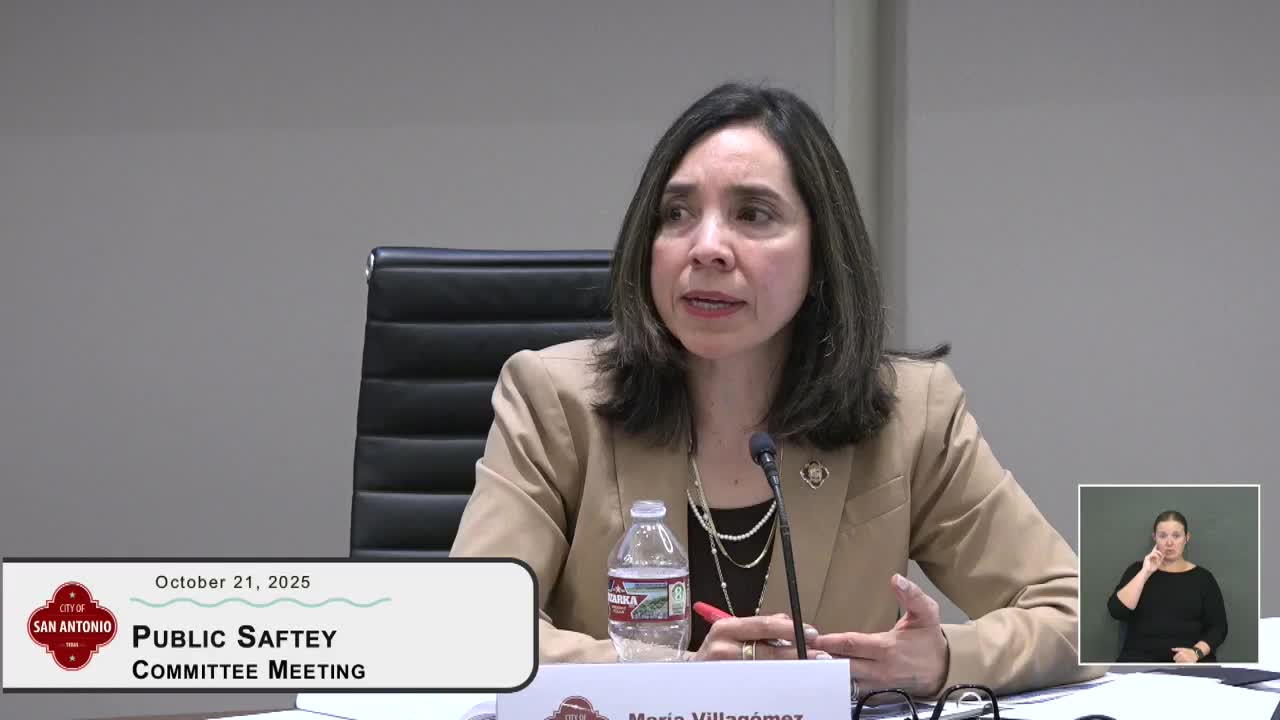Fire department presents regional hazard and preparedness assessment covering 13-county area
October 21, 2025 | San Antonio, Bexar County, Texas
This article was created by AI summarizing key points discussed. AI makes mistakes, so for full details and context, please refer to the video of the full meeting. Please report any errors so we can fix them. Report an error »

San Antonio Fire Department staff presented a regional hazard and capability assessment—part of a three-year cycle covering 13 counties—that identifies top regional hazards, vulnerable populations and capability gaps the city and partner jurisdictions may need to address.
The presenter (listed in the briefing as the regional preparedness coordinator) said the process combines county-level risk data, Social Vulnerability Index information and local incident reports to prioritize scenarios for training and resource planning. The evaluation is intended to inform grant applications, mutual-aid agreements and equipment purchases and to guide short‑ and long‑term preparedness investments.
Staff described how the assessment supports requests for FEMA and other grant funding and noted that identified gaps can lead to shared purchases (ambulances, buses, specialized equipment) or adjustments to the City’s general‑fund budget when grants are not available. The presentation named voluntary organizations that commonly participate in disaster response—United Way, Team Rubicon and the American Red Cross—and said universities and other nongovernmental partners are included in annual and triannual exercises.
Committee members asked about interlocal agreements and mutual-aid arrangements; staff confirmed the assessment is used to shape those agreements and to identify shared resource needs. Members also requested a supplemental list of participating jurisdictions and civil organizations; staff agreed to provide that list at a future meeting.
The item was presented for information; no committee action was required.
The presenter (listed in the briefing as the regional preparedness coordinator) said the process combines county-level risk data, Social Vulnerability Index information and local incident reports to prioritize scenarios for training and resource planning. The evaluation is intended to inform grant applications, mutual-aid agreements and equipment purchases and to guide short‑ and long‑term preparedness investments.
Staff described how the assessment supports requests for FEMA and other grant funding and noted that identified gaps can lead to shared purchases (ambulances, buses, specialized equipment) or adjustments to the City’s general‑fund budget when grants are not available. The presentation named voluntary organizations that commonly participate in disaster response—United Way, Team Rubicon and the American Red Cross—and said universities and other nongovernmental partners are included in annual and triannual exercises.
Committee members asked about interlocal agreements and mutual-aid arrangements; staff confirmed the assessment is used to shape those agreements and to identify shared resource needs. Members also requested a supplemental list of participating jurisdictions and civil organizations; staff agreed to provide that list at a future meeting.
The item was presented for information; no committee action was required.
View the Full Meeting & All Its Details
This article offers just a summary. Unlock complete video, transcripts, and insights as a Founder Member.
✓
Watch full, unedited meeting videos
✓
Search every word spoken in unlimited transcripts
✓
AI summaries & real-time alerts (all government levels)
✓
Permanent access to expanding government content
30-day money-back guarantee

